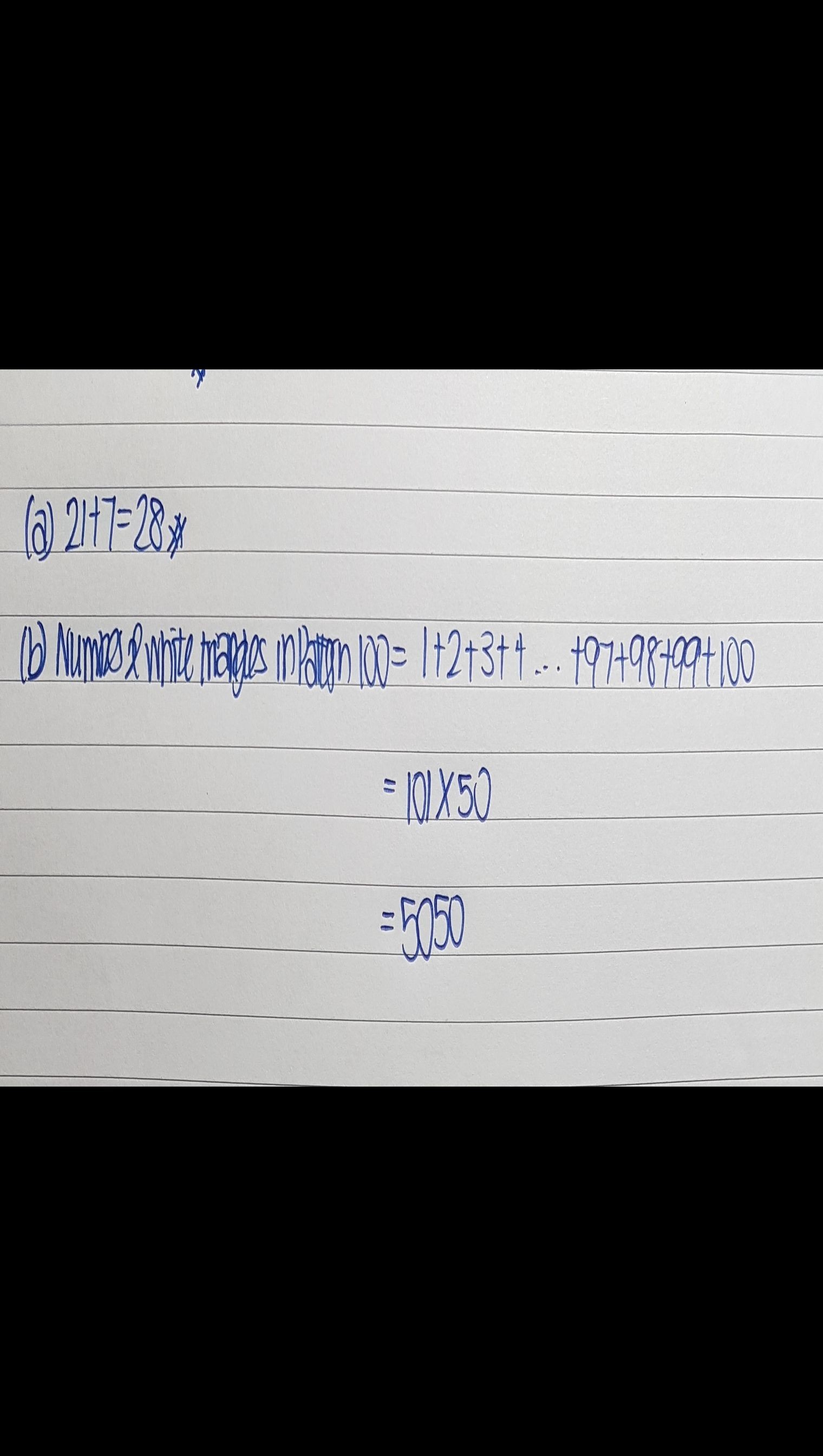korathlee's answer to Gelene's Primary 5 Maths question.
done
{{ upvoteCount }} Upvotes
clear
{{ downvoteCount * -1 }} Downvotes

did part (b) using pairing (1 and 100, 2 and 99, 3 and 98, etc). There will be 50 pairs of 101 since there are 100 numbers. Alternatively u can always use the method (n(n+1))/2 which is faster but i doubt is tested in primary sch.
Date Posted:
6 years ago

